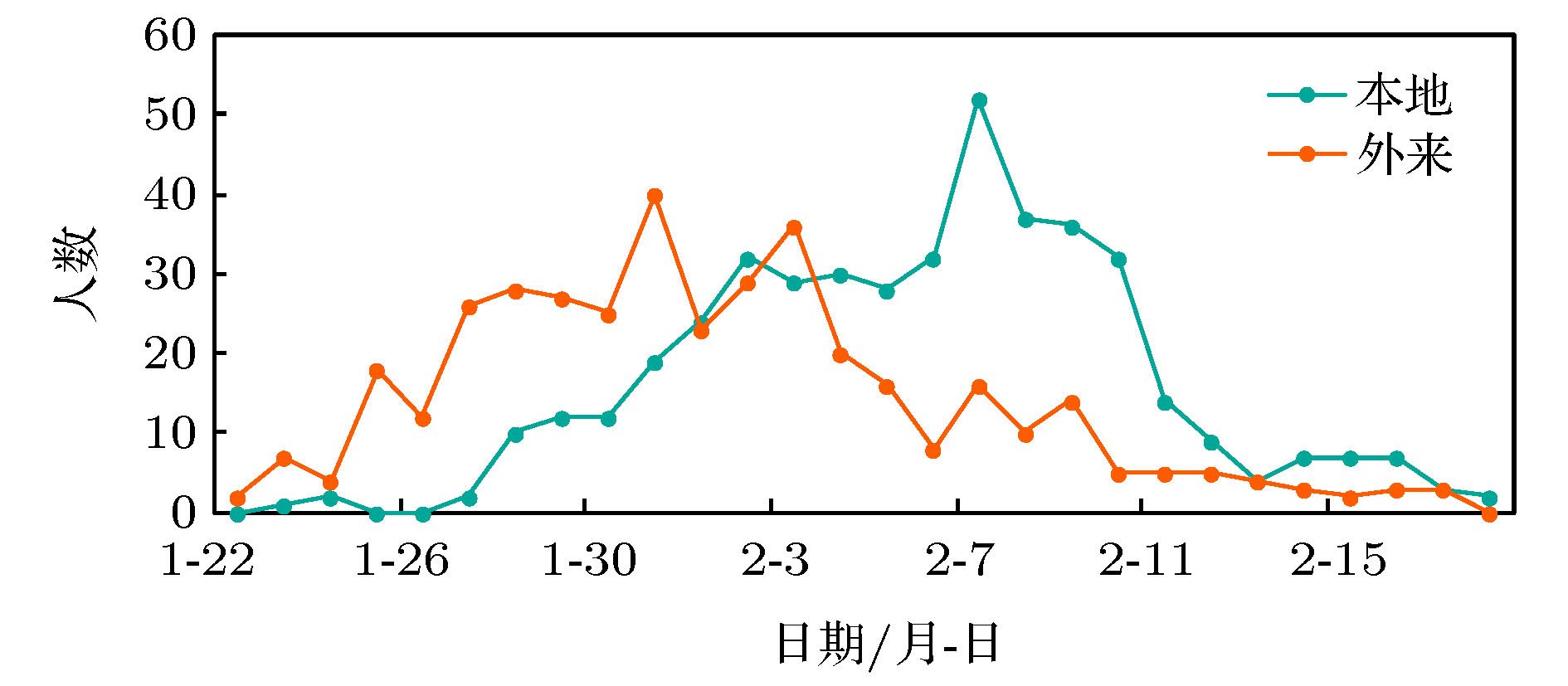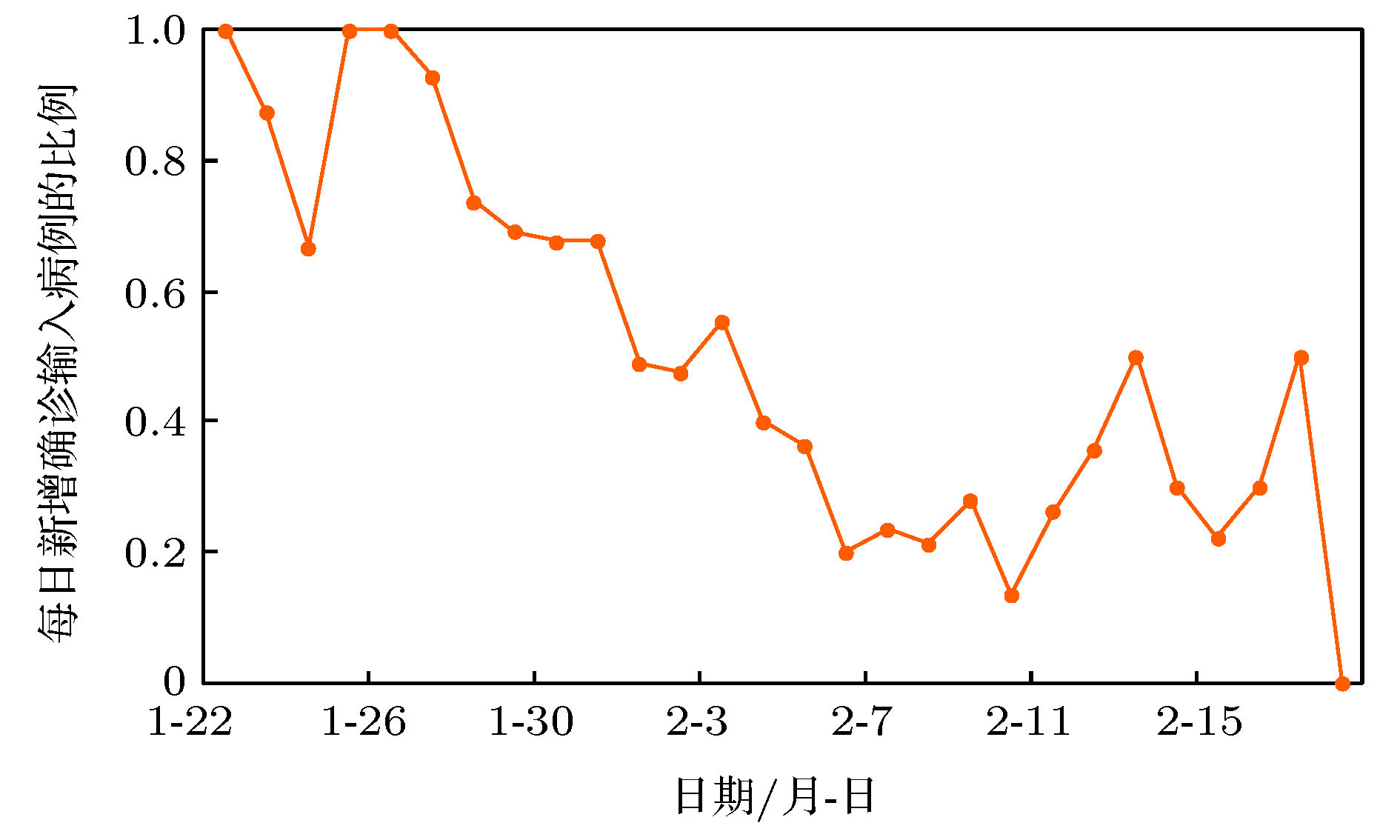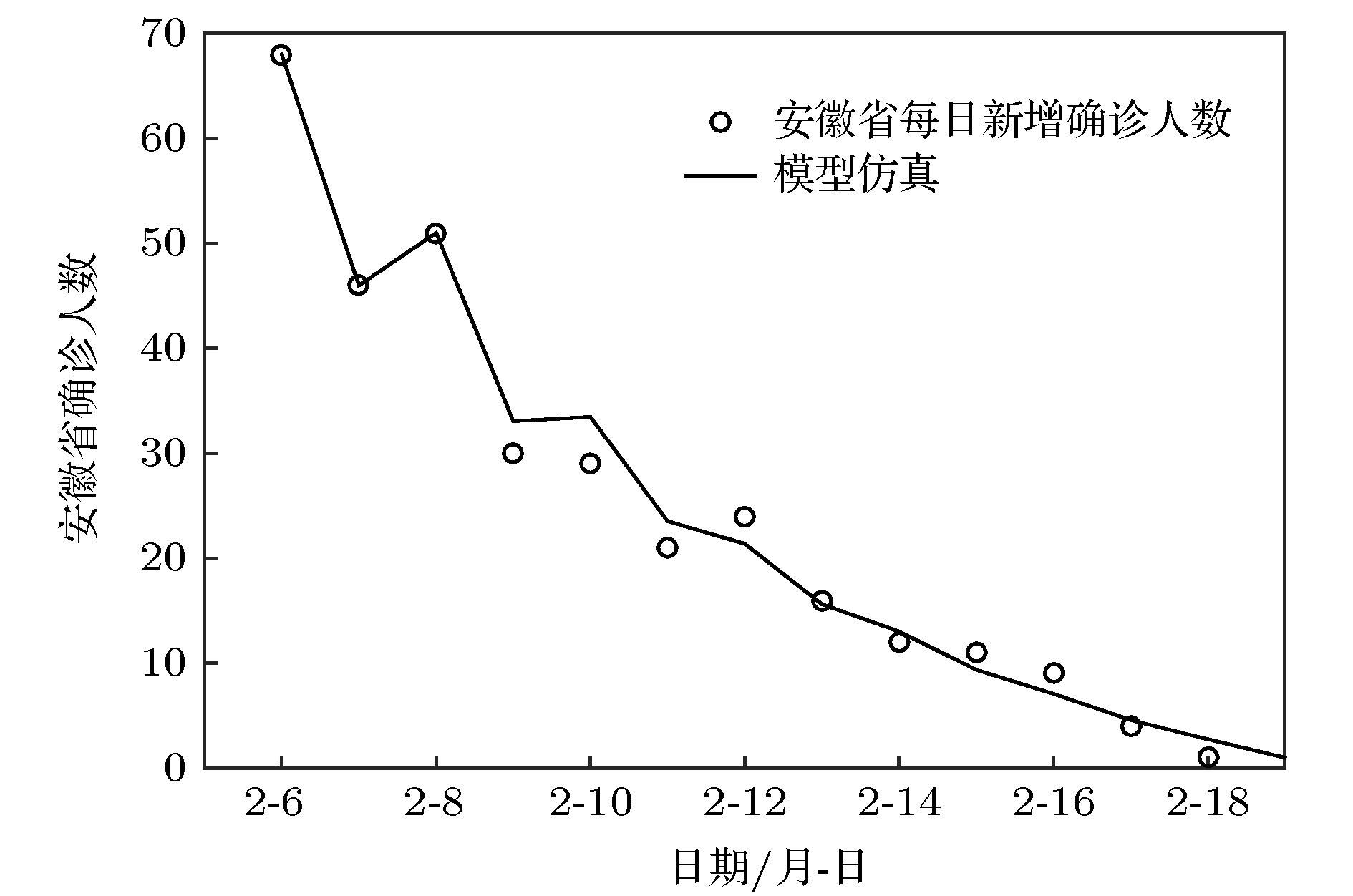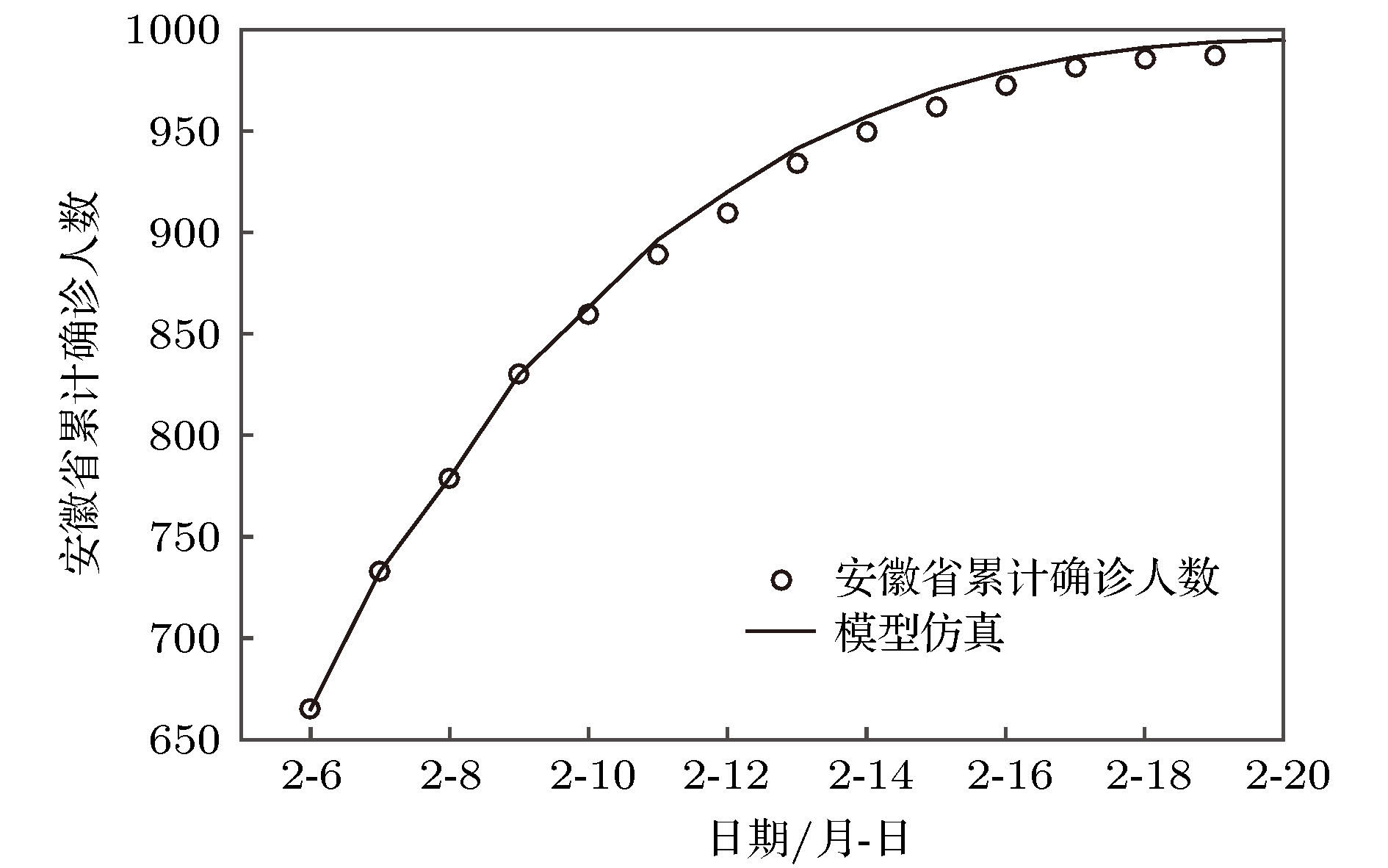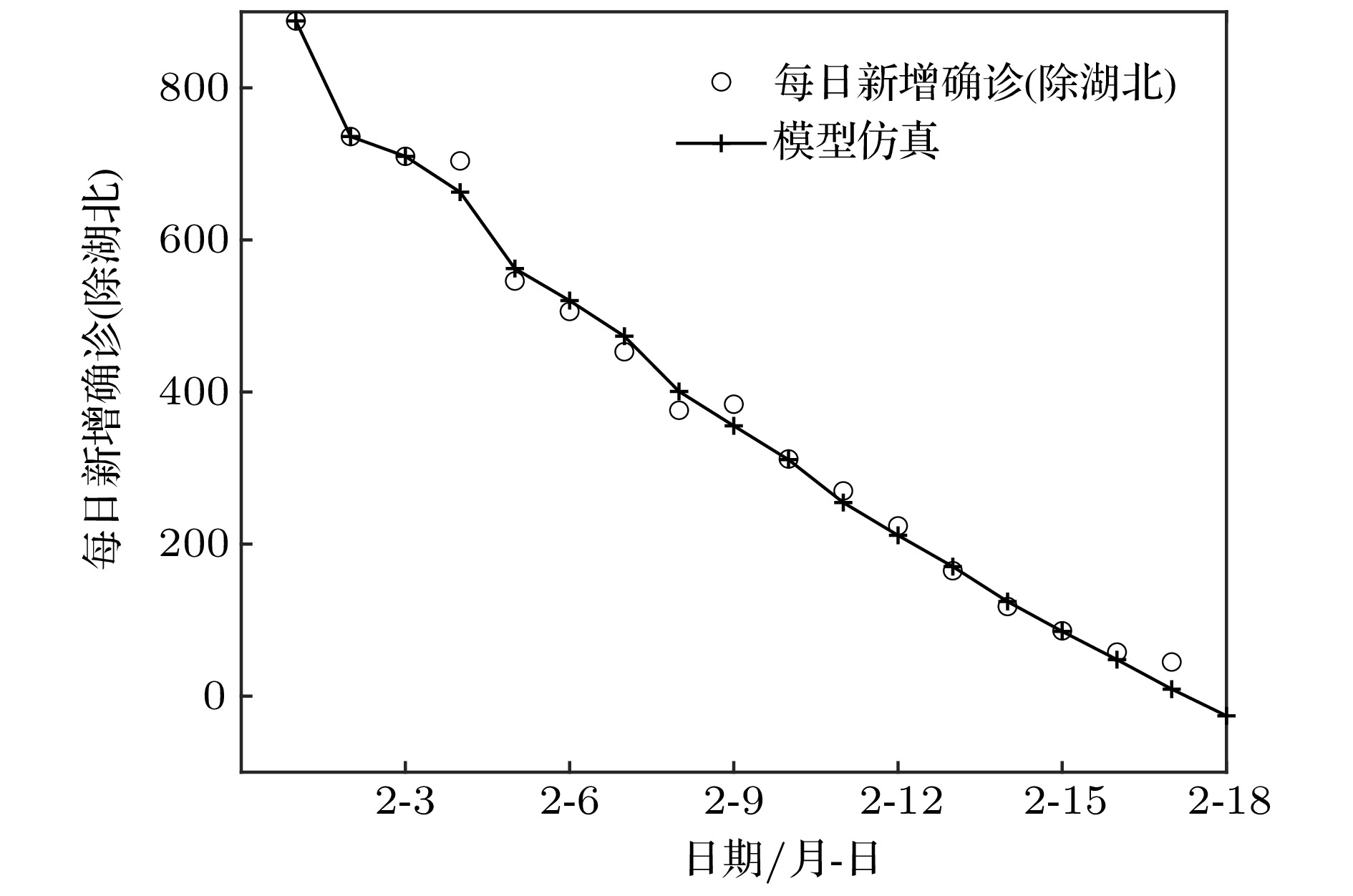-
Based on the information about more than 800 cases reported by Anhui provincial health commission on February 19 2020, the directional transmission relationship between the confirmed patients is constructed according to the contact history published in the cases, and it is found that the majority of the patients who can infect others are male and most of the patients who are infected are female. According to the analysis of case information, the early confirmed coronavirus disease 2019 (COVID-19) cases in Anhui province had the history of residence or exposure in Wuhan. In the later stage, the cases spread in small communities mainly by local transmission, and the strict prevention and control measures can effectively cut off further transmission in the communities. The time interval between diagnosing the source-infected patients and infected patients is fitted by Γ distribution, with a median of 2 days and an average of 2.67 days. Based on the statistical characteristics of directional transmission relationship, an autoregressive transmission model is constructed in the late stage of epidemic development in Anhui province, and the simulation results are consistent with the epidemic development data. Autoregressive model and simulation are also used for predicting the data of confirmed cases in the whole country except for Hubei province. This discovery can be referenced by regional epidemic prevention and control except for where it originated. Through strict protection measures and isolation measures, the spread of the epidemic outside the original place is highly viscous. It usually spreads by close contact between family members, and the local spread of COVID-19 can be effectively controlled.
-
Keywords:
- coronavirus disease 2019 epidemic /
- slow growth period /
- directed transmission /
- autoregression
[1] National Health Commission of the People’s Republic of China http://www.nhc.gov.cn/ [2020−03−29]
[2] Huaxia.com http://www.huaxia.com/xw/dlxw/2003/08/234782.html [2020−03−29]
[3] Sina.com https://news.sina.cn/zt_d/yiqing0121 [2020−03−29]
[4] Sina.com https://weibointl.api.weibo.cn/share/129902340.html?weibo_id=4475585516343394 [2020-03-29]
[5] 李春梅, 钟晓祝, 杨金城 2004 重庆医学 395 947
 Google Scholar
Google Scholar
Li C M, Zhong X Z, Yang J C 2004 Chongqing Med. J. 395 947
 Google Scholar
Google Scholar
[6] Wu J T, Leung K, Leung G M 2020 Lancet 365 689
 Google Scholar
Google Scholar
[7] 周涛, 刘权辉, 杨紫陌, 廖敬仪, 杨可心, 白薇, 吕欣, 张伟 2020 中国循证医学杂志 20 117
Zhou T, Liu Q H, Yang Z M, Liao J Y, Yang K X, Bai W, Liu X, ZhangW 2020 Chin. J. Evid.-Based Med. 20 117
[8] Jasper F W C, Yuan S F, Kinhang K, Kelvin K W T, Hin C, Yang J, Xing F F, Liu J L, Cyril C Y, Rosana W S P, Hoiwah T, Simon K L, Kwokhung C, Vincent K P, Wanmui C, Jonathan D I, Jianpiao C, Vincent C C C, Honglin C, Christopher H, Kwokyung Y 2020 Lancet 395 514
 Google Scholar
Google Scholar
[9] Wang C, Peter W H, Frederick G H, George F G 2020 Lancet 395 470
 Google Scholar
Google Scholar
[10] Guan W, Ni Z, Hu Y, Liang W, Ou C, He J, Liu L, Shan H, Lei C, Hui D S C, Du B, Li L, Zeng G, Yuen K Y, Chen R, Tang C, Wang T, Chen P, Xiang J, Li S, Wang J L, Liang Z, Peng Y, Wei L, Liu Y, HuY H, Peng P, Wang J M, Liu J, Chen Z, Li G, Zheng Z, Qiu S, Luo J, Ye C, Zhu S, Zhong N 2020 The New England Journal of Medicine DOI: 10.1056/NEJMoa2002032Google Scholar
[11] 张龙浩, 李柏宏, 贾鹏, 蒲剑, 白蓓, 李音, 朱培嘉, 李雷, 曾国军, 赵欣, 董珊珊, 刘梦菡, 张楠 2020 生物医学工程学杂志 37 1
 Google Scholar
Google Scholar
Zhang L H, Li B H, Jia P, Pu j, Bai P, Zhu P J, Li L, Zeng G J, Zhao X, Dong S S, Liu M H, Zhang N 2020 J. Biomedical Eng. 37 1
 Google Scholar
Google Scholar
[12] Maria N, Niamh O’Neill, Catrin S, Mehdi K, Maliha A, Riaz Ag 2020 Int. J. Surg. 76 71
 Google Scholar
Google Scholar
[13] 喻孜, 张贵清, 刘庆珍, 吕忠全 2020 电子科技大学学报 DOI: 10.12178/1001-0548.2020027Google Scholar
Yu Z, Zhang G Q, Liu Q Z, Lv Z Q 2020 Journal of University of Electronic Science and Technology of China DOI: 10.12178/1001-0548.2020027Google Scholar
[14] Gerardo C, Cécile V, Simonsen L, Moghadas S M 2016 The Royal Society. Collection DOI: 10.6084/m9.figshare.c.3473634.v2Google Scholar
[15] 张琳 2020 电子科技大学学报 DOI: 10.12178/1001-0548.2020037Google Scholar
Zhang L 2020 Journal of University of Electronic Science and Technology of China DOI: 10.12178/1001-0548.2020037Google Scholar
[16] Benjamin F M, Dirk B 2020 arXiv: 2002.07572 [q-bio.PE]
[17] Liu Q, Jiang D Q, Tasawar H, Ahmed A, Bashir A 2020 Physica A DOI: 10.1016/j.physa.2020.124152Google Scholar
[18] 蔡洁, 贾浩源, 王珂 2020 山东医药 60 1
 Google Scholar
Google Scholar
Cai J, Jia H Y, Wang K 2020 Shandong Med. J. 60 1
 Google Scholar
Google Scholar
[19] Luo Y T, Tang S T, Teng Z D, Zhang L 2019 Nonlinear Anal. Real World Appl. 50 365
 Google Scholar
Google Scholar
[20] 张彦平 2020 中华流行病学杂志 41 145
 Google Scholar
Google Scholar
Zhang Y P 2020 China J. Epidevmiol. 41 145
 Google Scholar
Google Scholar
[21] Du Z W, Xu X K, Wu Y, Wang L, Cowling B J, Meyers A L 2020 Emerg. Infect. Dis. DOI: 10.3201/eid2606.200357Google Scholar
-
图 5 源传染患者与被传染患者间确诊时间差的分布直方图, 图中拟合密度参考线为Γ (10.84, 1.08)分布, 并向左平移9
Figure 5. Distribution histogram of the time interval of diagnosis between source infected patients and infected patients. In the figure, the fitting density reference line is the distribution of Γ (10.84, 1.08) and shifts 9 to the left.
表 1 传播过程中源传染患者与被传染患者性别统计(有效样本233例)
Table 1. Gender statistics of source infected patients and infected patients during virus transmission. The number of valid sample is 233.
源传染者-被传染者 人数 比例 男-女 83 0.3562 男-男 54 0.2318 女-男 56 0.2403 女-女 40 0.1717 表 2 病毒传播过程中源传染患者与被传染患者关系统计 (有效样本233, 仅截取统计样本量大于等于5的情况, 其中比例为每个类别内的人数除以有效样本数233得到)
Table 2. Relationship statistics between source infected patients and infected patients during virus transmission. The number of valid sample is 233. Use only statistical sample size greater than or equal to 5. The ratio is the number of people in each category divided by valid sample number 233.
源传染者-被传染者 人数 比例 丈夫-妻子 36 0.1538 妻子-丈夫 21 0.0897 儿子-母亲 11 0.0470 母亲-儿子 10 0.0427 儿子-父亲 10 0.0427 母亲-女儿 7 0.0299 父亲-女儿 5 0.0214 哥哥-弟弟 5 0.0214 父亲-儿子 5 0.0214 -
[1] National Health Commission of the People’s Republic of China http://www.nhc.gov.cn/ [2020−03−29]
[2] Huaxia.com http://www.huaxia.com/xw/dlxw/2003/08/234782.html [2020−03−29]
[3] Sina.com https://news.sina.cn/zt_d/yiqing0121 [2020−03−29]
[4] Sina.com https://weibointl.api.weibo.cn/share/129902340.html?weibo_id=4475585516343394 [2020-03-29]
[5] 李春梅, 钟晓祝, 杨金城 2004 重庆医学 395 947
 Google Scholar
Google Scholar
Li C M, Zhong X Z, Yang J C 2004 Chongqing Med. J. 395 947
 Google Scholar
Google Scholar
[6] Wu J T, Leung K, Leung G M 2020 Lancet 365 689
 Google Scholar
Google Scholar
[7] 周涛, 刘权辉, 杨紫陌, 廖敬仪, 杨可心, 白薇, 吕欣, 张伟 2020 中国循证医学杂志 20 117
Zhou T, Liu Q H, Yang Z M, Liao J Y, Yang K X, Bai W, Liu X, ZhangW 2020 Chin. J. Evid.-Based Med. 20 117
[8] Jasper F W C, Yuan S F, Kinhang K, Kelvin K W T, Hin C, Yang J, Xing F F, Liu J L, Cyril C Y, Rosana W S P, Hoiwah T, Simon K L, Kwokhung C, Vincent K P, Wanmui C, Jonathan D I, Jianpiao C, Vincent C C C, Honglin C, Christopher H, Kwokyung Y 2020 Lancet 395 514
 Google Scholar
Google Scholar
[9] Wang C, Peter W H, Frederick G H, George F G 2020 Lancet 395 470
 Google Scholar
Google Scholar
[10] Guan W, Ni Z, Hu Y, Liang W, Ou C, He J, Liu L, Shan H, Lei C, Hui D S C, Du B, Li L, Zeng G, Yuen K Y, Chen R, Tang C, Wang T, Chen P, Xiang J, Li S, Wang J L, Liang Z, Peng Y, Wei L, Liu Y, HuY H, Peng P, Wang J M, Liu J, Chen Z, Li G, Zheng Z, Qiu S, Luo J, Ye C, Zhu S, Zhong N 2020 The New England Journal of Medicine DOI: 10.1056/NEJMoa2002032Google Scholar
[11] 张龙浩, 李柏宏, 贾鹏, 蒲剑, 白蓓, 李音, 朱培嘉, 李雷, 曾国军, 赵欣, 董珊珊, 刘梦菡, 张楠 2020 生物医学工程学杂志 37 1
 Google Scholar
Google Scholar
Zhang L H, Li B H, Jia P, Pu j, Bai P, Zhu P J, Li L, Zeng G J, Zhao X, Dong S S, Liu M H, Zhang N 2020 J. Biomedical Eng. 37 1
 Google Scholar
Google Scholar
[12] Maria N, Niamh O’Neill, Catrin S, Mehdi K, Maliha A, Riaz Ag 2020 Int. J. Surg. 76 71
 Google Scholar
Google Scholar
[13] 喻孜, 张贵清, 刘庆珍, 吕忠全 2020 电子科技大学学报 DOI: 10.12178/1001-0548.2020027Google Scholar
Yu Z, Zhang G Q, Liu Q Z, Lv Z Q 2020 Journal of University of Electronic Science and Technology of China DOI: 10.12178/1001-0548.2020027Google Scholar
[14] Gerardo C, Cécile V, Simonsen L, Moghadas S M 2016 The Royal Society. Collection DOI: 10.6084/m9.figshare.c.3473634.v2Google Scholar
[15] 张琳 2020 电子科技大学学报 DOI: 10.12178/1001-0548.2020037Google Scholar
Zhang L 2020 Journal of University of Electronic Science and Technology of China DOI: 10.12178/1001-0548.2020037Google Scholar
[16] Benjamin F M, Dirk B 2020 arXiv: 2002.07572 [q-bio.PE]
[17] Liu Q, Jiang D Q, Tasawar H, Ahmed A, Bashir A 2020 Physica A DOI: 10.1016/j.physa.2020.124152Google Scholar
[18] 蔡洁, 贾浩源, 王珂 2020 山东医药 60 1
 Google Scholar
Google Scholar
Cai J, Jia H Y, Wang K 2020 Shandong Med. J. 60 1
 Google Scholar
Google Scholar
[19] Luo Y T, Tang S T, Teng Z D, Zhang L 2019 Nonlinear Anal. Real World Appl. 50 365
 Google Scholar
Google Scholar
[20] 张彦平 2020 中华流行病学杂志 41 145
 Google Scholar
Google Scholar
Zhang Y P 2020 China J. Epidevmiol. 41 145
 Google Scholar
Google Scholar
[21] Du Z W, Xu X K, Wu Y, Wang L, Cowling B J, Meyers A L 2020 Emerg. Infect. Dis. DOI: 10.3201/eid2606.200357Google Scholar
Catalog
Metrics
- Abstract views: 18980
- PDF Downloads: 232
- Cited By: 0














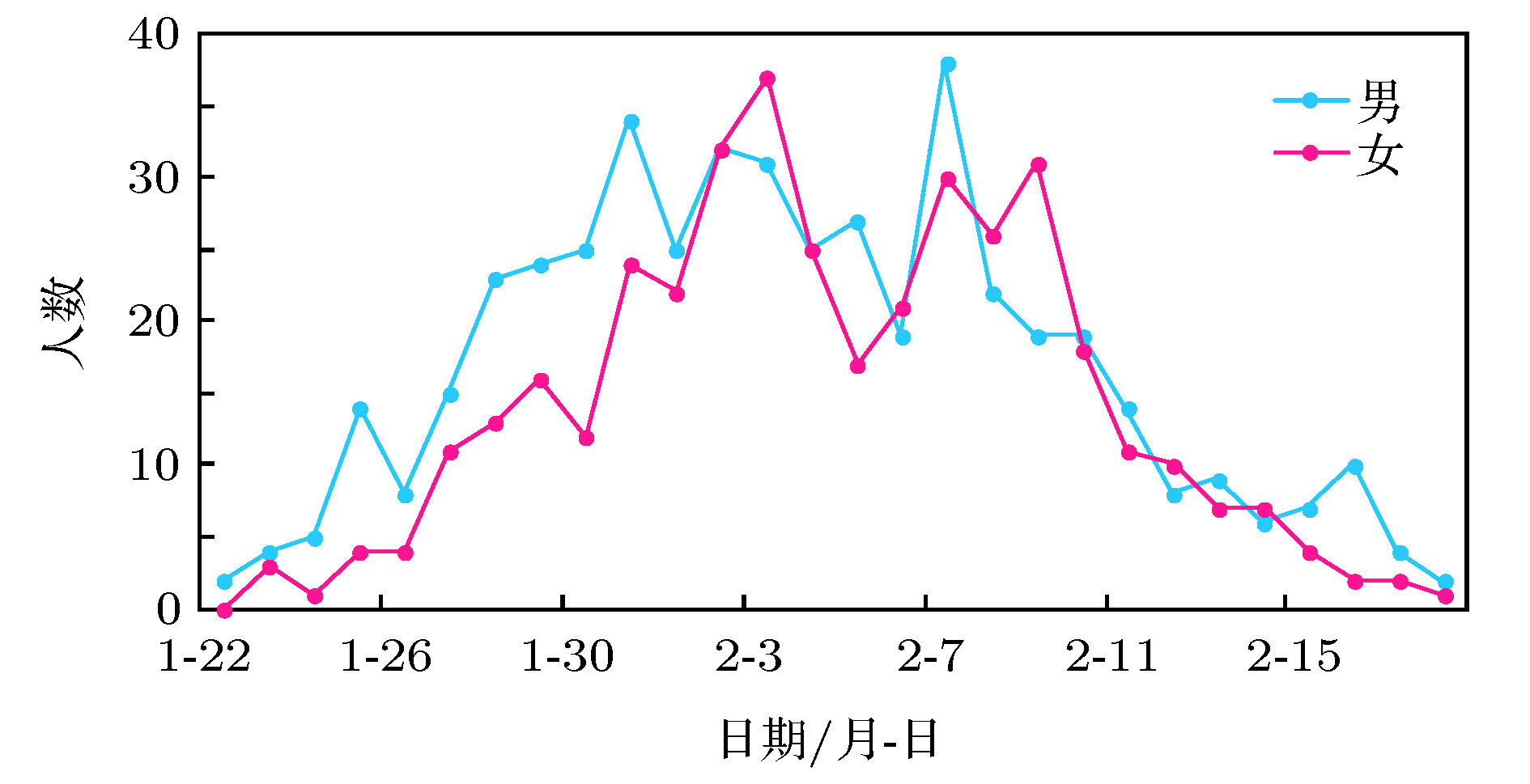
 DownLoad:
DownLoad:

